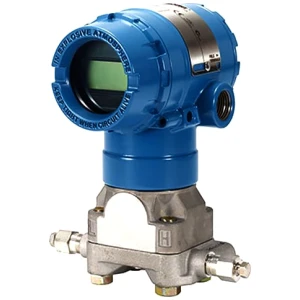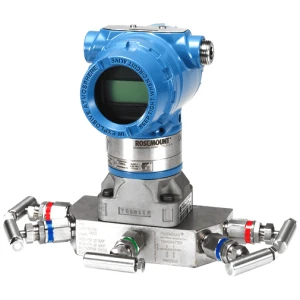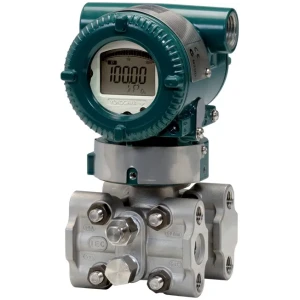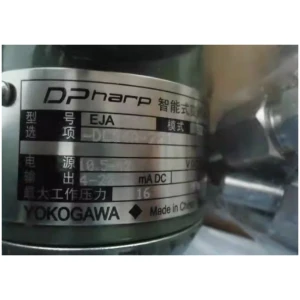Differential pressure transmitters are precision measurement instruments that measure the difference in pressure between two points in a system (high-side and low-side ports), converting this pressure differential into standardized electrical signals (4-20mA or digital outputs) for accurate monitoring and control of flow rates, liquid levels, filter conditions, and density across industrial applications.
Visit SCS-Instrument Supplier today to explore our comprehensive selection of differential pressure transmitters from leading brands, available in various specifications to meet your exact measurement needs.
Differential Pressure Transmitters
Differential Pressure Transmitters
Differential Pressure Transmitters
Differential Pressure Transmitters
Differential Pressure Transmitters
Differential Pressure Transmitters
How Differential Pressure Transmitters Work
A differential pressure transmitter typically consists of a sensor module, an electronics section, and process connections (such as flanges or ports). Within the sensor assembly:- Isolation Diaphragms These thin barriers separate a fill fluid from your process media, enabling them to flex in response to changing pressures without direct contact with potentially corrosive or abrasive substances.
- Pressure Sensor Minute deflections of the diaphragms are converted into electrical signals by the sensing element, which can be a piezoelectric, strain gauge, or capacitive component.
- Overpressure Diaphragm This protective feature engages when pressures on the high (HI) or low (LO) sides exceed the device’s safe operating limits, shielding the transmitter from damage.
Elements of a Differential Pressure Transmitter
Differential pressure transmitters rely on two primary inputs—often referred to as the high side (HI) and the low side (LO)—to detect variations in pressure. Below are the most common elements:Primary Element (High Side)
This component introduces a measurable pressure drop. Examples include:- Orifice Plates
- Venturi Tubes
- Flow Nozzles
- Pitot Tubes
- Laminar Flow Elements
Secondary Element (Low Side)
Sensors—such as strain gauges or vibrating wires—measure how much the primary element’s pressure drop has altered the flow or level. These secondary elements convert mechanical deformations into electrical signals, laying the groundwork for accurate differential pressure measurement.Protective Electronics Housing
The transmitter’s internal circuitry—terminal connections, signal processing boards, diagnostic features—resides in a sealed enclosure. This protective housing translates raw sensor data into standard signals, such as 4–20 mA or digital communication protocols, and shields sensitive electronics from heat, moisture, and chemical exposure.Differential Pressure Transmitters Offered by scs-Instrument
At scs-Instrument, we specialize in selling a broad selection of top-tier differential pressure transmitters. These devices cater to industries like Food & Beverage, Petroleum Refining, and Wastewater & Sewage that demand consistent, high-accuracy measurement. Some featured products include:Rosemount 3051C Differential Pressure Transmitter
- High Accuracy for precise control of flow, level, or pressure
- Predictive Diagnostics that reduce downtime and service costs
- Robust Design built to operate in corrosive or high-temperature conditions
Rosemount 2051C Differential Pressure Transmitter
- Compact, Cost-Effective performance without sacrificing precision
- Coplanar Platform for easy integration with manifolds and remote seals
- User-Friendly Interface simplifying setup and calibration
E+H Deltabar PMD75 Differential Pressure Transmitter
- Corrosion-Resistant Construction suitable for harsh process fluids
- Multiple Communication Protocols (HART, PROFIBUS, etc.) for flexible data exchange
- Consistent Accuracy in fluctuating temperature or flow conditions
ABB 266series Differential Pressure Transmitter
- Extended Stability minimizing recalibration intervals
- Digital Connectivity for integration into modern distributed control systems
- Advanced Sensor Technology ensuring reliable readings over a wide range
Yokogawa EJA110E Differential Pressure Transmitter
- Fast Dynamic Response indispensable for tight process control loops
- In-depth Self-Diagnostics preventing unexpected production issues
- Sturdy Construction to handle extreme operational environments
Yokogawa EJA118E Differential Pressure Transmitter
- Ideal for Level Measurement in vacuum or pressurized vessels
- Long Lifecycle under aggressive chemical conditions
- Effortless Installation in space-constrained setups
The Importance of Accuracy in Differential Pressure Sensors
High accuracy is critical in sectors where even minor inconsistencies in measurement can lead to significant operational losses or safety risks. With accurate differential pressure transmitters, facilities can:- Optimize Safety: Quickly identify abnormal pressure fluctuations
- Comply with Regulations: Meet strict standards in Oil & Gas and Chemical & Pharmacy
- Reduce Costs: Avoid product waste and improve energy efficiency through tighter process control
Troubleshooting Guide for Differential Pressure Transmitters
Even premium transmitters can show performance irregularities. Below are common trouble spots:1. Output Irregularities
- No or Inconsistent Signal: Check wiring, power supply voltage, and loop polarity.
- Blocked/Leaking Impulse Lines: Clear blockages or air pockets; fix any damaged tubing.
- Sensor Element Faults: Inspect for visible deformities or contamination, and consult the product manual for servicing guidelines.
2. Calibration Hiccups
- Unstable Pressure Source: Ensure gauge accuracy and verify no leaks in calibration rig.
- Power Supply & Meter Checks: Confirm stable voltage and verify that test meters read correctly.
- Electronic Components: Keep terminals and connectors clean; contamination or loose contact can distort signals.
Applications of Differential Pressure Transducers
Differential pressure transducers thrive in multiple scenarios:- Flow Measurement: Gauging liquid or gas flow through orifice plates and Venturi tubes
- Level Monitoring: Assessing fluid levels in sealed and pressurized tanks
- Density Computations: Calculating fluid density from vertical pressure gradients
- Viscosity Analysis: Evaluating fluid viscosity changes through controlled differential pressure
Industries Applications
At scs-Instrument, we supply high-performance differential pressure transmitters that serve the needs of:- Oil & Gas
- Food & Beverage
- Petroleum Refining
- Wastewater & Sewage
- Chemical & Pharmacy
Industrial Uses of Differential Pressure Transmitters
Because they maintain precise measurements under diverse process conditions, differential pressure transmitters are integral to countless industrial processes. Whether it is ensuring consistent flow in a Food & Beverage plant or monitoring reservoir levels in an Oil & Gas operation, these devices offer:- Rugged Protection: Able to withstand corrosive chemicals, extreme temperatures, or high-pressure environments
- Real-Time Data: Instantaneous process feedback to improve response times
- Compliance Assurance: Meeting national and international standards for quality and safety
Advantages of Using Differential Pressure Sensors
- Flexible Configuration: Adaptable to numerous primary elements, from orifice plates to pitot tubes.
- Reliable Performance: Maintains stable readings even when process conditions change rapidly.
- Robust Construction: Engineered to endure demanding industrial environments without frequent maintenance.
- Straightforward Integration: Local displays and digital protocols facilitate seamless connectivity with modern control systems.
- Preventive Safety: Minimizes risk by spotting anomalies early and supporting proactive interventions.
Partner with scs-Instrument for Trusted DP Solutions
Selecting the right differential pressure transmitter in today's dynamic marketplace can be daunting due to the multitude of brands and models available. As a dedicated reseller, scs-Instrument is committed to guiding you through this complex landscape, ensuring you find the perfect solution tailored to your operational needs and budget.Why Choose scs-Instrument?
- Expertise: Our experienced team possesses extensive product knowledge and industry insights, enabling us to provide personalized recommendations that align with your specific application requirements.
- Comprehensive Inventory: We offer a wide range of differential pressure transmitters from reputable brands including Rosemount, Endress+Hauser (E+H), ABB, and Yokogawa. This variety ensures that we can meet diverse needs across different industrial applications.
- Tailored Solutions: We understand that each application is unique. Our approach involves assessing your operational goals and constraints to recommend the most suitable transmitter, whether it’s for monitoring flow rates, liquid levels, or pressure differentials in various environments.
Featured Brands
- Rosemount: Known for their robust and reliable transmitters like the Rosemount 3051 series, which are widely used for flow measurement and process control.
- Endress+Hauser (E+H): Offers innovative solutions with high accuracy and reliability, suitable for challenging industrial conditions.
- ABB: Provides advanced differential pressure transmitters that feature wireless communication capabilities and high measurement accuracy, ideal for modern industrial applications.
- Yokogawa: Their DPharp technology ensures precise measurements across a range of conditions, making them a trusted choice in many sectors.







